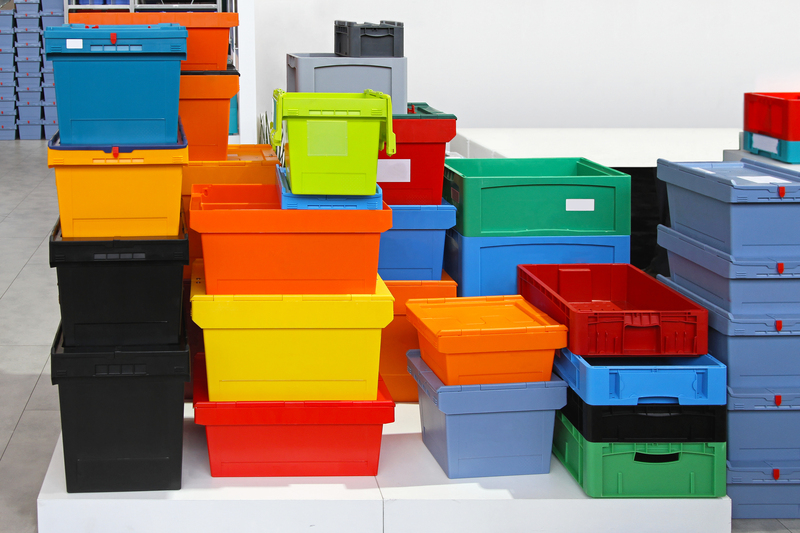Ensuring Safety for Your Items While Moving
Moving can be both an exciting and a stressful experience. While the prospect of a new home and a fresh start is exhilarating, the process of packing up your belongings and ensuring their safe arrival at your new place can be daunting. Fortunately, with the right approach and careful planning, you can protect your items and make your move as smooth as possible. In this article, we'll explore the strategies and tips to ensure the safety of your items while moving.
Planning and Preparation
Proper planning and preparation are crucial to ensuring the safety of your items during a move. Here are some essential steps to take:
- Create a Moving Checklist: A comprehensive checklist can help you stay organized and ensure that all tasks are completed on time. Include tasks such as hiring movers, purchasing packing supplies, and notifying utility companies of your move.
- Declutter: Before you start packing, go through your belongings and get rid of items you no longer need. Donate, sell, or dispose of items that are in good condition but no longer serve a purpose for you. This will reduce the number of items you need to pack and move.
- Take Inventory: Make a detailed inventory of your belongings, including high-value and fragile items. This will help you keep track of everything and make it easier to file a claim if any items are damaged or lost during the move.

Packing Materials
The quality of your packing materials plays a significant role in protecting your items. Investing in the right supplies can make a big difference:
- Boxes: Use sturdy, high-quality boxes in various sizes. Avoid using old or damaged boxes, as they may not provide adequate protection. Consider purchasing specialty boxes for fragile items such as dishware, glassware, and electronics.
- Bubble Wrap and Packing Paper: Bubble wrap and packing paper are essential for cushioning fragile items. Use them to wrap delicate items and fill empty spaces in boxes to prevent movement during transit.
- Furniture Pads and Blankets: Protect large items such as furniture and appliances with furniture pads and blankets. These can prevent scratches, dents, and other damage.
- Sealing Tape: Use strong sealing tape to reinforce the bottom and top of boxes. Securely tape all seams to prevent the boxes from opening during the move.
- Labels: Clearly label each box with its contents and the room it belongs in. Use "Fragile" labels for boxes containing delicate items.
Packing Techniques
Packing your items properly is essential for their safety. Follow these techniques to ensure your belongings are well-protected:
- Use Proper Packing Techniques for Fragile Items: For items such as glassware, china, and electronics, wrap each item individually with bubble wrap or packing paper. Place them in sturdy boxes and fill any empty spaces with additional packing material.
- Disassemble Furniture: If possible, disassemble large furniture items such as beds, tables, and bookshelves. This will make them easier to move and reduce the risk of damage. Keep screws and small parts in labeled bags and tape them to the corresponding pieces of furniture.
- Pack Heavy Items in Small Boxes: To prevent boxes from becoming too heavy and difficult to handle, pack heavy items such as books in small boxes. This will also minimize the risk of boxes breaking under the weight.
- Don't Overpack Boxes: Overpacking boxes can cause them to burst open during the move. Leave enough space for protective packing materials and ensure that boxes can be securely sealed.
Hiring Professional Movers
Hiring professional movers can significantly reduce the stress and physical strain of moving. Follow these steps to choose the right moving company:
- Research and Compare: Look for reputable moving companies with positive reviews and ratings. Get quotes from multiple companies and compare their services and pricing.
- Check for Licensing and Insurance: Ensure that the moving company is licensed and insured. This will protect you in case of any damage or loss during the move.
- Ask for References: Request references from previous customers to get an idea of the company's reliability and professionalism.
- Read the Contract Carefully: Before hiring a moving company, read the contract carefully and understand the terms and conditions. Clarify any doubts or concerns you may have.
Insurance and Claims
Despite your best efforts, accidents can happen during a move. Having proper insurance coverage can provide peace of mind and financial protection:
- Moving Company Insurance: Most professional moving companies offer basic insurance coverage, also known as "basic liability." This coverage is usually minimal, so consider purchasing additional insurance for high-value items.
- Third-Party Insurance: You can also purchase moving insurance from third-party providers. This offers more comprehensive coverage and can protect against a wider range of risks.
- Homeowner's or Renter's Insurance: Check if your homeowner's or renter's insurance policy covers your belongings during a move. Some policies may include coverage for goods in transit.
- File Claims Promptly: If any items are lost or damaged during the move, file a claim with the moving company or insurance provider as soon as possible. Provide detailed documentation, including your inventory list and photographs of the damage.
Loading and Unloading
Proper loading and unloading techniques are essential to prevent damage to your belongings. Keep the following tips in mind:
- Distribute Weight Evenly: When loading the moving truck, distribute the weight of boxes and furniture evenly. Place heavier items at the bottom and lighter items on top. This will help prevent shifting and damage during transit.
- Secure Items: Use straps, ropes, or bungee cords to secure items in place. This will prevent them from moving and getting damaged during the move.
- Handle Fragile Items with Care: When loading and unloading fragile items, handle them with care and avoid stacking heavy boxes on top of them. Consider transporting precious items such as valuable artwork or antiques separately in your vehicle.
- Get Help: Moving heavy or bulky items can be challenging, so enlist the help of friends or hire professional movers. Use proper lifting techniques to avoid injury.

Unpacking and Settling In
Once you've arrived at your new home, take your time unpacking and organizing your belongings. Here are some tips to make the process easier:
- Start with Essentials: Begin by unpacking essential items such as toiletries, clothing, and kitchenware. This will make your first few days in your new home more comfortable.
- Room by Room: Unpack one room at a time to keep the process organized. Focus on setting up key areas such as the bedroom, kitchen, and bathroom first.
- Check for Damages: As you unpack, inspect your items for any damage that may have occurred during the move. Take photographs and document any issues for insurance claims.
- Recycle Packing Materials: Dispose of packing materials responsibly by recycling boxes, bubble wrap, and packing paper. Consider donating gently used boxes to others who may be moving.
Conclusion
Ensuring the safety of your items while moving requires careful planning, the right packing materials, and proper techniques. By following the tips and strategies outlined in this article, you can protect your belongings and enjoy a smoother, less stressful move. Whether you choose to hire professional movers or tackle the move yourself, taking the necessary precautions will help ensure that your items arrive safely at your new home.
Remember, each move is unique, and it's essential to adapt these tips to your specific situation. With thoughtful preparation and a proactive approach, you can make your moving experience a positive and successful one.





